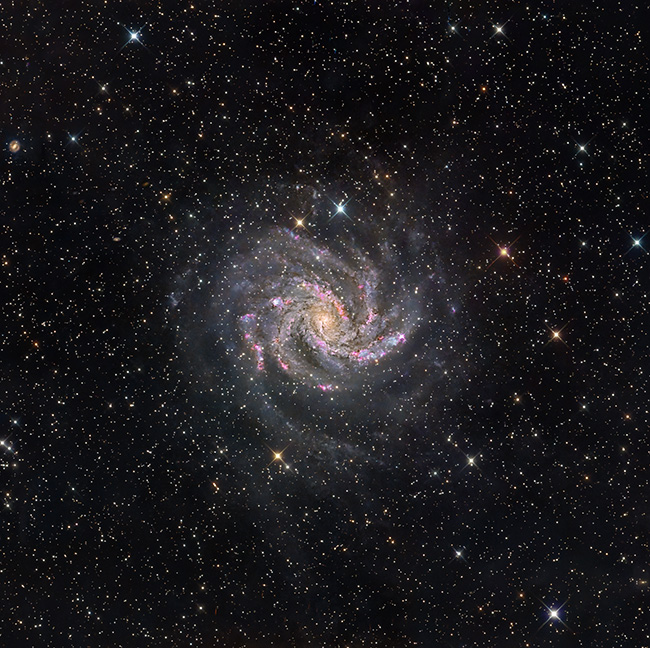
| Date: July 26, 2025 Location: Dark Sky Observatory, Fort Davis, TX Click on the image below to view at higer resolution. |

| Discovered by William Herschel in 1798[2]. NGC 6946, also known as the Fireworks Galaxy, is an intermediate spiral galaxy located near the boundary of the constellations Cepheus and Cygnus, approximately 7.72 Mpc (25 million light-years) from the Earth[1]. This face-on spiral galaxy is renowned for its unusually high rate of supernova activity. Ten supernovae within NGC 6946 have been recorded in the 20th and 21st centuries alone. This high number of exploding stars earned the nickname Fireworks Galaxy[2]. This LRGB image captures the star-forming HII regions within the galaxy's spiral arms. These areas are visible as pinkish glows scattered throughout the galaxy. Blue clusters of young, massive stars, and dark dust lanes that trace the galaxy's structure are also visually apparent. Although not visible in optical wavelenth images, significant magnetic fields along 6946's spiral arms have been detected[3]. These magnetic structures have been studied using large radio telescopes[3,4]. Despite being relatively close and bright, NGC 6946 lies in the direction of a heavily obscured region of the Milky Way known as the Zone of Avoidance[5]. Foreground interstellar dust reduces apparent brightness and makes multi-wavelength observation crucial for studies of objects lying within, or in the direction of, the Zone of Avoidance. Infrared sensitive space telescopes have the ability to peer through the obscuring dust. Perhaps the new JWST will yield pertinent and important new information of this remarkable galaxy. Member of the Dark Sky Observatory Collaborative References |